- Home
- Sue Monk Kidd
The Dance of the Dissident Daughter Page 4
The Dance of the Dissident Daughter Read online
Page 4
Now with the wisdom of hindsight, I can look back and understand what I could not really see then—that as a woman I was severed from something deep inside myself, something purely and powerfully feminine. Steeped in a faith tradition that men had named, shaped, and directed, I had no alliance with what might be called the Sacred Feminine. I had lost my connection to feminine soul.
When I use the term feminine soul, I’m referring to a woman’s inner repository of the Divine Feminine, her deep source, her natural instinct, guiding wisdom, and power. It is everything that keeps a woman powerful and grounded in herself, complete in herself, belonging to herself, and yet connected to all that is. Connection with this inner reality is a woman’s most priceless experience.
I wish someone had told me this that autumn, and I suppose that’s why I’m saying it at the outset. We need to know the root problem when the awakening begins, when all is fuzzy and the feelings are confused and we find ourselves suddenly yelling across the dinner table that we are fed up. We need to know what has happened to women and to ourselves so we can find our way back to our feminine souls with as much purpose and clarity as possible.
With the connection to my feminine soul broken, I had no idea how to unfold my spiritual life in a way that was natural and genuine for women. I didn’t even know there was a feminine way of being spiritual. If I had, I probably couldn’t have given myself permission to embrace it. Not then.
Disconnected from my feminine soul, I had also unknowingly forfeited my power to name sacred reality. I had simply accepted what men had named. Neither had I noticed that when women give this power away, it is rarely used to liberate and restore value to women. More often it is used to shore up and enhance the privileged position of men.
In the beginnings of Christianity, church fathers debated whether women had souls at all. Later the issue became whether or not a woman’s soul could be saved. Today the issue is one of women reconnecting with their souls.
To reconnect with our souls we need to claim the freedom and power to shed our conditioning, to tear out the stitches from the old fabric, and to define for ourselves who we are as women, what is sacred, and how we relate to sacred experience. When we finally do that, we will weave new lives and a new era. We will take back our souls once and for all.
This shedding and defining, this tearing out stitches and reweaving new ones became the essential work of my journey. But as author Madonna Kolbenschlag wrote, “Much testing, much reflecting, much living must intervene before we can say, ‘My soul is my own.’”6
Sleep Dust
Like the Sandman from the nursery tale, who stole into children’s rooms and put them to sleep by sprinkling sleep dust over them, our culture, even the culture of our faith, has helped anesthetize the feminine spirit.
I like the way Clarissa Pinkola Estés says it:
When a woman is exhorted to be compliant, cooperative, and quiet, to not make upset or go against the old guard, she is pressed into living a most unnatural life—a life that is self-blinding . . . without innovation. The world-wide issue for women is that under such conditions they are not only silenced, they are put to sleep. Their concerns, their viewpoints, their own truths are vaporized.7
The sleep seems to descend on females early in life. Studies conducted by Harvard professor Carol Gilligan and Colby College professor Lyn Mikel Brown from 1986 to 1990 have revealed that something truly phenomenal happens to girls around adolescence.8 They undergo a gradual change in which they lose their feisty spirit, courage, and willingness to speak out—qualities they had known in girlhood. Around this time their truth becomes silenced, held back. They become afraid of conflict with males, because they know on some level that males hold the power. They become—perhaps forever—good little girls, settling into the clichés and limits imposed on their gender.
So sleep begins. For some it can extend throughout life as unconsciousness deepens and numbness sets in. These women lose all memory of the problem they once saw. For other women the sleep is more fitful; they sometimes glimpse the truth, but it never seems to rouse them fully. These women tend to fall back asleep when the waking state becomes threatening.
But whether our sleep is sound or partial, when we are cut off from our feminine source, from the Feminine Divine, symptoms inevitably break through.
Although outwardly appearing stable and satisfied, inwardly we may feel silenced, afraid, stuck, self-doubtful, unable to carry through with things, angry but unable to express it directly. We may grow perfectionistic and driven, but strangely at the same time we may feel powerless, without boundaries, overwhelmed with the roles we are expected to carry out. Moreover, we may harbor fears of being left alone, of risking ourselves, of conflict.
In my mid- to late thirties, before my awakening began, I was experiencing many of these symptoms. Yet I was unable to see that they were trying to tell me something, that they were voices urging me to drop deep into my own feminine nature.
Wake-Up Calls
Even on the literal level, waking was always hard for me. I have had only one nickname in my life, given to me by my brother, eleven years younger than I. He called me Sue-up, a name he made up for me when he was a toddler and I a young adolescent. At that time I’d sleep so soundly that alarm clocks could not get through to me, and I would wake only after being shaken a half-dozen times. Each morning people in my family would go around asking, “Is Sue up?” My little brother, who was learning to speak, thought this was my name.
Now beginning to wake up at thirty-eight, I realized that once again I’d been living up to my old nickname. As a woman I’d slept so soundly that wake-up calls had not really gotten through to me. Not the feminist movement, not the marginalization of women in the church, not exclusive male language in scripture and liturgy. I had been upset and alarmed by the staggering assault on women through rape, spousal abuse, sexual abuse, harassment, and genital mutilation, but somehow this didn’t initiate a full-blown awakening.
I’d been disturbed by a stream of statistics, such as four times as many girls die worldwide of malnutrition as boys because boys are preferred and given more food. Or the fact that women do two-thirds of the work in the world and receive one-tenth of the world’s wages.9 Or that American women earn 75 percent of what similarly employed men do and comprise only 2 percent of top management. But neither did this rouse my feminine heart in the sort of way that propels one into a life-changing journey.
The first fictional story I ever wrote was about a woman who walked in her sleep nearly every night.10 “People deposit their misery somewhere in their body,” the character Hallie says. “Mine apparently is the sleep center of my brain.” But despite her awareness that her sleepwalking signals something wrong in her life, she refuses to face her life or her problems.
Then one night she sleepwalks outside and climbs a ladder that has been left leaning against the house. She wakes three rungs from the top, everything around her darkness and air. Frightened, she backs down and returns to her room, where she ties her arm to the bedpost, afraid she’ll sleep again and wake on the roof, this time stepping off into thin air.
But even then she doesn’t confront the changes she needs to make. So she walks in her sleep again, this time backing the car down the driveway and crashing into a Japanese elm. It takes the crash to wake her. She sits at the wheel, stunned, a trickle of blood on her forehead, knowing finally that she must alter the direction of her life.
Here is one of the principles of women waking: If you don’t respond to the first gentle nudges, they will increase in intensity. Next you will wake up on the roof. And if you do not respond to that, there will likely be a crash. There are women who sleep through the crashes, too. I imagine by then the impulse to wake gives up and they drift into permanent hibernation.
Why in the world do women sleep through all manner of wake-up calls? I think part of it is because we use psychological sleep as a way of avoiding pain. Our choice, as Florence Nightingale put it, is b
etween pain and paralysis. A hard one. But it’s only when we are willing to see the truth about our lives as women, however painful that truth might be, that we enter the portal of the journey.
That November, two months after the dream of giving birth to myself, I had a real collision with the truth. It would be my “driveway crash.”
THE NEST OF YELLOW LEAVES
The monastery visit I’d planned was supposed to be just another routine retreat.
When I arrived dusk was falling. I strolled to the church along a sidewalk covered with so many fallen leaves that it was like walking on one long yellow carpet. I sat through vespers, listening to the monks chant the office, hopelessly trying to follow them in the prayer book but nevertheless swept into the strange beauty of the chant.
Afterward I waited outside the church for a monk named Father Paschal, who was to be my spiritual director during the retreat. Standing ankle-deep in leaves, I watched the monks file out in their black, hooded robes, and I wondered which one Father Paschal might be. He would have no problem spotting me; I was the only female in the whole place.
Suddenly I heard a little cough behind me and, turning, saw a smiling man with shaven dark hair and round glasses. “I’m Father Paschal,” he said.
At that moment I opened my mouth and uttered what is undoubtedly the most embarrassing Freudian slip of my life. I said, “Hello, I’m Father Sue.”
He got a funny look on his face. Heat flared in my cheeks.
“Are you feeling nervous about being here?” he asked, attributing my word slip to anxiousness.
I hated to tell him that no, actually I was an old hand at monasteries. “I must be,” I said.
We chatted a while longer, though I don’t recall a thing we said after that. My face stayed warm a good half hour.
Back in my room, I thought about my strange slip of the tongue. It hadn’t come from nervousness like Father Paschal suggested, so why did I say that? Maybe it was an indication of just how at home I felt in monastic places, that I had become “one of them.” Sure, that’s got to be it, I thought.
But some other part of me suspected the real truth, one too bitter to let in. That part in my unconscious, knowing and wise, was telling me exactly who I was identified with. It was telling me that my values, my spirituality, my way of being a woman in the world were masculine through and through. I was immersed in the world of the father.
Father Sue. I wanted to cry.
The next morning I rose and went for a walk, taking pen and journal. I walked toward a small stand of trees at the edge of the monastery, where I picked my way through young pines, half-bare maples, and bramble until I came to a small, hidden clearing.
It was wall-to-wall yellow leaves and dappled light. Impulsively I took armfuls of leaves and plumped them into a big pile to sit on. When I finished, the mound resembled the kind of nest Big Bird of Sesame Street would require. Almost laughing, I wrote in my journal, “I’m here in the woods sitting on a big nest of leaves.”
I laid down my pen. You know what, I thought, maybe I made this big nest because I’m here to hatch my new life, to give birth to something. I remembered the dream of giving birth to myself, to the female life that wanted to come into being, and immediately, surprisingly, my eyes filled with tears.
I sat still. I wrote, “So then, what’s standing in the way of this new life being born?” And it came to me all at once. For one thing, you’re going to have to forgive yourself for not being born male. You’re going to have to learn to love your real female life.
I sat there open-mouthed. What? That was ridiculous. Of course I loved being a woman. I reveled in my femaleness.
But the inner voice was not talking about my surface revelings in being feminine. It was telling me something much more complex. It was telling me that I’d lost the voice of my native soul, or as novelist Ursula K. Le Guin put it, the innate mother tongue. I had learned instead to speak the father tongue, the dominant cultural language.11
Inside I felt like something submerged in me from the beginning of time had slit the surface. Some awful, sunken truth I didn’t want to acknowledge had floated up to awareness. Maybe that humiliating Father Sue comment had dislodged it. Or maybe the comment was merely the debris of a truth already rising. For a moment I tried to pretend the thought hadn’t come, but it was too late. My body had recognized it as the truth even before my mind could allow it. My heart was thudding, and my stomach was doing slow rolls into my chest.
Next I was crying one of those shoulder-shaking cries. A girl, I thought. I was born a girl with three brothers. I felt utterly cheated. My anguish was so intense it shocked me. It was as if I felt inferior simply for being female—that as a woman I was damaged goods or at least “seconds.”
I had somehow never known this about myself. It was terrible to admit, but even worse was feeling the pain that came with it. I thought, If I’d been born male, dear God! the things I could have done! I longed for parity with men, the freedom and choices of men, the ability to quest without worrying about who would cook dinner or pick up the children. I longed for the power men had to name the world, for the world had been largely male defined. Even God “himself” was defined by men and envisioned in their image.
Being female had always seemed vaguely limiting, confining, lacking in power, second-class. As I tried to understand why, I found myself thinking about Eve. Some words played in my head, the old litany about women I’d heard in church: “second in creation and first to sin.” Some years before, the Southern Baptist denomination had passed a resolution saying that women should not have a place of authority over men in church because of this. It had come straight out of the epistle of 1 Timothy (2:11–14) written in the second century:
Let a woman learn in silence with all submissiveness. I permit no woman to teach or to have authority over men; she is to keep silent. For Adam was formed first, then Eve; and Adam was not deceived, but the woman was deceived and became a transgressor. (RSV)
As I brooded over this, I remembered the first time I’d heard the words first to sin, second in creation. The memory was still vivid, undulled after more than twenty-five years.
It was a Sunday morning, and I was around twelve. I sat in church in my childhood Georgia with my mother and father and two of my three younger brothers. We were listening to a visiting preacher give a sermon. It had to do with the “God-ordained family.” The preacher had a portable chalkboard beside the pulpit, and on it he diagrammed the family for us. He wrote God at the top, then in a descending chain of command he wrote husband, wife, children.
I remembered the downward-pointing arrows he drew between each word, showing us the line of authority. When he got to the part about why wives were below husbands, I was on the edge of my pew. “Woman was the first to sin and the second to be created,” he said. Then he went on to talk about Eve, how she was created for man’s benefit, that she was unworthy because she disobeyed God and offered Adam the forbidden fruit.
It was just like that day in Vacation Bible School when the teacher had informed us the Bible put men in charge. I felt the same rush of disbelief and betrayal.
By then I’d heard the message many times, but that day it fell like the proverbial last straw, the one that breaks the female camel’s back. I listened to this “man of God” taking his message right out of what we considered to be the truest book of all. A feeling of pressure built in my chest, almost the same feeling I got at the city pool when I stayed underwater too long. I looked down the pew at my mother to get her reaction. Her eyes had glazed over; she looked like she’d heard it at least five hundred times before. I looked at the other women. Same there. I wanted them to stand up and say indignantly that this wasn’t so, but none of them looked the least bit perturbed.
My heart sank. If I could have put the feeling into words, I would have said, “God, how could you?”
The so-called God-ordained image of female as under male, incapable, disobedient, unworthy—all of which ad
ded up to inferior—was a devastating notion to me as a girl. It snuffed out something vital, some hope for my female life.
When I left church that day, real doubt had set in about the value of being a girl.
Years later when I came upon some words by theologian Elizabeth A. Johnson, I felt the deep click of truth inside. She said that experiences like the one I had “give girl children from the beginning the experience of a world where the male is the norm from which her own self deviates.”12 Over the years the idea of being “other,” of being the lesser sex, had continued to seep into me. I saw now it had penetrated the marrow of my tiniest bones. That day in the nest of leaves outside the monastery I came to know this for the first time. It was a moment of awakening. I had touched the wound of my feminine life.
THE FEMININE WOUND
When I returned home from the monastery, I wasn’t quite the same. Oh, I tried to be. The holiday season was coming, and I thought if I dived into it full force the pain would be forgotten. I shelved my journal. The children and I went shopping. We dragged out decorations, drove to the country, and cut greenery. We put so much evergreen in the house Sandy said it looked like we were celebrating Arbor Day. I went crazy baking things, and I don’t even like to bake. I also created new writing projects for myself. I did what I could to blot out the recognition that there was a feminine journey to be made and it was probably going to be the most arduous, most revolutionary experience of my life.
Feminist thealogian Carol P. Christ states that a woman’s awakening begins with an “experience of nothingness.”13 It comes as she experiences emptiness, self-negation, disillusionment, a deep-felt recognition of the limitation placed on women’s lives, especially her own.
An experience of nothingness was what I encountered at the monastery. In tasting what it meant to be female in my culture and faith, I felt, for the first time, a hidden despair lodged inside.

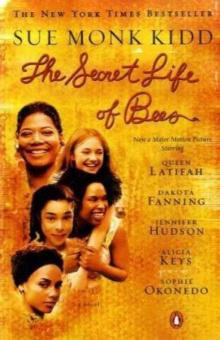 The Secret Life of Bees
The Secret Life of Bees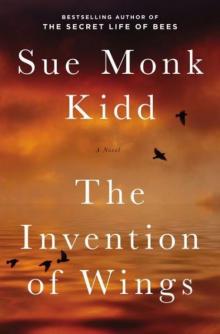 The Invention of Wings
The Invention of Wings Traveling With Pomegranates
Traveling With Pomegranates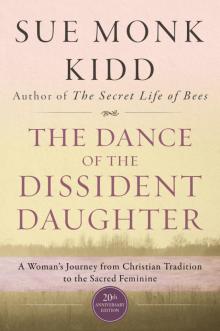 The Dance of the Dissident Daughter
The Dance of the Dissident Daughter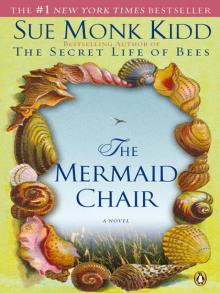 The Mermaid Chair
The Mermaid Chair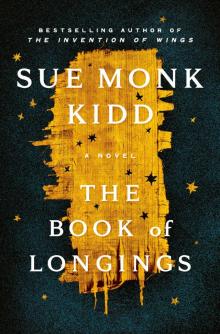 The Book of Longings
The Book of Longings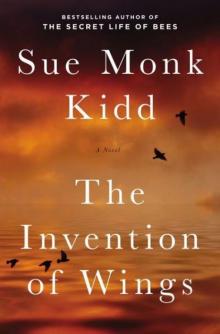 The Invention of Wings: A Novel
The Invention of Wings: A Novel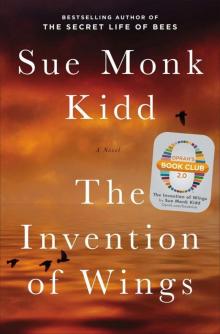 The Invention of Wings: With Notes
The Invention of Wings: With Notes